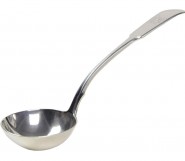Lot #43 - Charles Conder
-
Auction House:Mossgreen
-
Sale Name:Fine Australian & International Art
-
Sale Date:02 May 2016 ~ 6.30pm - Part 1 - Lots 1 - 47
03 May 2016 ~ 2.30pm - Part 2 - Lots 48 - 320 -
Lot #:43
-
Lot Description:Charles Conder
(1868-1909)
L'Aristocrat' & 'Au Bord de la Seine
watercolour on silk (2)
75 x 154 cm (each) -
Provenance:Sir Edmund and Mary Davis collection, London; Barry Humphries, London; Private collection, Sydney; Australian and International Paintings, Christie's, Melbourne, 24 November 1999, lots 75 & 76 (illustrated); Private collection, Melbourne
-
References:Sir Robert Rothenstein, The Life and Death of Conder, London, 1938, pp. 191, 208-209 (related works); Anna Gray, The Edwardians: Secrets and desires, National Gallery of Australia, Canberra, 2004, pp. 34 - 35, pp. 154-156 (related works); Ann Galbally, Charles Conder: The Last Bohemian, University Press, Melbourne, 2003, pp. 256 - 263 (related works)
-
Notes:Charles Conder's sojourn in Australia was as powerful as it was short lived. Although he spent just under six years between Sydney and Melbourne (1884-1890), his contribution to the development of Australian art was so great that it can be easy to ignore the artist's later work from London and Paris. In Australia, alongside Tom Roberts and Arthur Streeton, he was responsible in organising the momentous '9 by 5 Impression Exhibition' - he not only designed the show's front cover, but was one of its biggest contributors. At just twenty years of age, he was already considered a leader of Australian Impressionism.1 Nonetheless, local recognition for the young avant-garde circle was slow and thin. The lure of Paris, where modern tendencies were beginning to gain traction, was too strong, and shortly after the 9 by 5 Exhibition, Conder left Australia, never to return. In Paris, his gregarious nature drew him close to a number of key progressive painters. He shared a studio with William Rothenstein, frequented Louis Anquetin, and maintained a life-long friendship with Toulouse Lautrec. The latter used Conder as a model in a number of works, and painted his portrait in Aux Ambassadeurs, Gens Chics (National Gallery of Art, Washington). Being the protean artist he was, Conder soon came under the influence of his immediate group. Remarkably, the move to Paris led Conder to largely abandon, Pleinairism, Impressionism and Symbolism in favour of a more elegant and aesthetic style, closer to the art of Whistler and Lautrec. This refinement and sophistication could not have been more appropriate to the aesthetic tastes of Edwardian London where Conder settled in 1894. He continued to make friends in the art and literary circles and his work, now concentred on silk paintings, was rather successful - his decorated fans were collected by many notable figures including Oscar Wilde.2 His most important and rewarding relationship, however, was struck with Edmund (later Sir) Davis. A Melbourne-born mining magnate and passionate art patron, Davis not only collected Conder's work in depth, but he presented the artist with, what art historian John Rothenstein labelled, 'the most ambitious of [Conder's] decorative achievements'.3 The present pair of silk paintings is believed to have formed part of this scheme of ten panels that hung in the Davis' drawing and chamber rooms at 11-13 Landsdowne Road, Holland Park.4 They were displayed in what were later informally known as the 'Conder Rooms'. The present diptych is in essence a fte galante transposed to the vaguely recognisable backdrop of modern Paris (and what is probably the seventeenth century, Pont Marie). With no underlying narrative, the scenes are immersed in an overall sensation of luxe, calme e volupté. The glamorously dressed women in the foreground embody the ideal and tranquil abitude in the paintings of seventeenth century artists Fragonard and Watteau. Indeed, the revivalist tradition of eighteenth century French interiors was very much in line with both the aesthetic choices of Conder and Davis. Although this series was produced for a private collection, they quickly became famous all over London.5 Edmund and Mary Davis held Conder in such high regard that they threw a fabulous party to celebrate the completion of the series. Naturally, Conder designed the invitation card matching the flair and grace of his panels. While much of the Davis collection was donated to the Musée d'Orsay and the Musée du Luxembourg, other pieces from the vast collection are now scattered around the globe. These two works were purchased by Barry Humphries - a well-known collector of Conder's work and are now part of a distinguished private collection in Melbourne - proof, if any was needed, that there are some Australians who appreciate and value 'late Conder'. Petrit Abazi 1 Sophie Osmond, Table Talk, 28 June 1889. 2 Cited in John Rothenstein, The Life and Death of Conder, Dent, London, 1938, p. 148. 3 Ibid., p. 209. 4 These rectangular works are not to be confused with the oval shaped series, also commissioned by Davis. See reproductions in T. Martin Wood, 'A room decorated by Charles Conder', The Studio, vol. 44, April 1905. 5 See Ibid.
-
GST:Please note GST will be charged on the hammer price
-
Estimate:A$12,000 - 18,000
-
Realised Price:
-
Category:Art
This Sale has been held and this item is no longer available. Details are provided for information purposes only.













